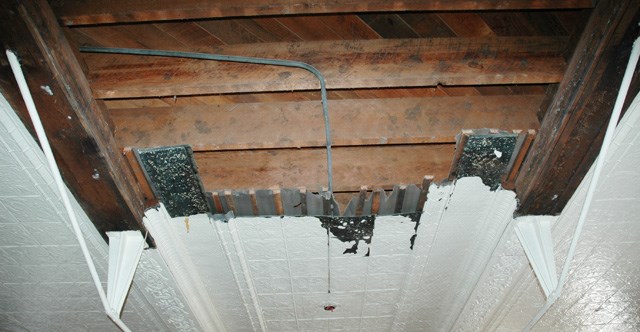
NPS Rehabilitation of Fort Baker into Cavallo Point
Construction began in December, 2006 to rehabilitate Fort Baker into Cavallo Point, The Lodge at Golden Gate. At the time of the rehabilitation project, the ceilings were over 100 years old and covered with so many layers of paint that they have begun to lose their ornamental detail. Lead paint, a health hazard, was also present on the ceilings. As part of the rehabilitation project, many historic buildings were remodeled for new uses and functions. The design for one of the barracks buildings included a dining hall underneath offices on the 2nd floor. The historic architects needed to ensure that the dining hall noise did not travel up through the floors. Layers of sound-proofing insulation were added to the ceilings to help decrease ambient noise in the buildings. Due to these factors, the decision was made to temporarily remove and clean the ceilings tiles. 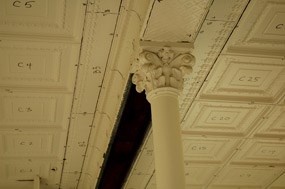
NPS photo The cleaning of the pressed-metal ceilings The cleaning and restoration of the pressed-metal panels was labor-intensive process. The historic architects and their contractors prepared for this project a bit like how you would assemble a giant jigsaw puzzle. The first task was to document and identify the precise location of each individual ceiling panel. Literally every panel from every ceiling in every room in every building was individually numbered and identified, so that when the pieces were cleaned and ready for re-installation, everyone was confident that they knew where all the pieces fit back together. On-site carpenters built special wooden-boxes to store and protect the metal panels while they waited to be cleaned. 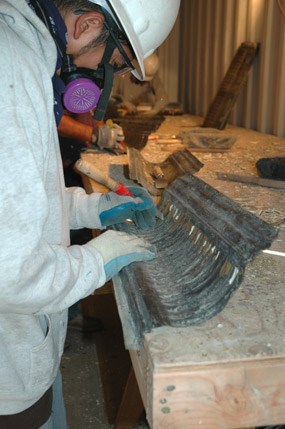
NPS photo Once the panels were safely removed, they needed to be thoroughly cleaned. Traditionally, removing several layers of thick paint can be a messy and toxic job. But here is where a little luck and science came into play. Through experimentation, the project architects discovered that if they froze the metal panels and then flexed them, the paint layers would pop-off of the stiff metal. Not all historic paints remove this easily, but fortunately for this project, the earliest paint coating on the panels responded well to the freezing treatment. For this process, the large wooden boxes of panels were placed into commercial-sized freezers for a length of time. Once they were sufficiently frozen, the individual panels were then removed and gently flexed and tapped with brushes. In most cases, the paint flaked right off. What stubborn paint wasn’t removed by this method was carefully removed with chisels. All the lead paint was appropriately secured and stored in hazardous material containers, awaiting further proper disposal. 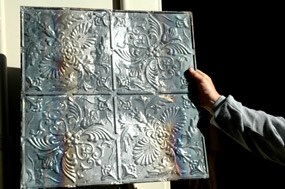
NPS photo 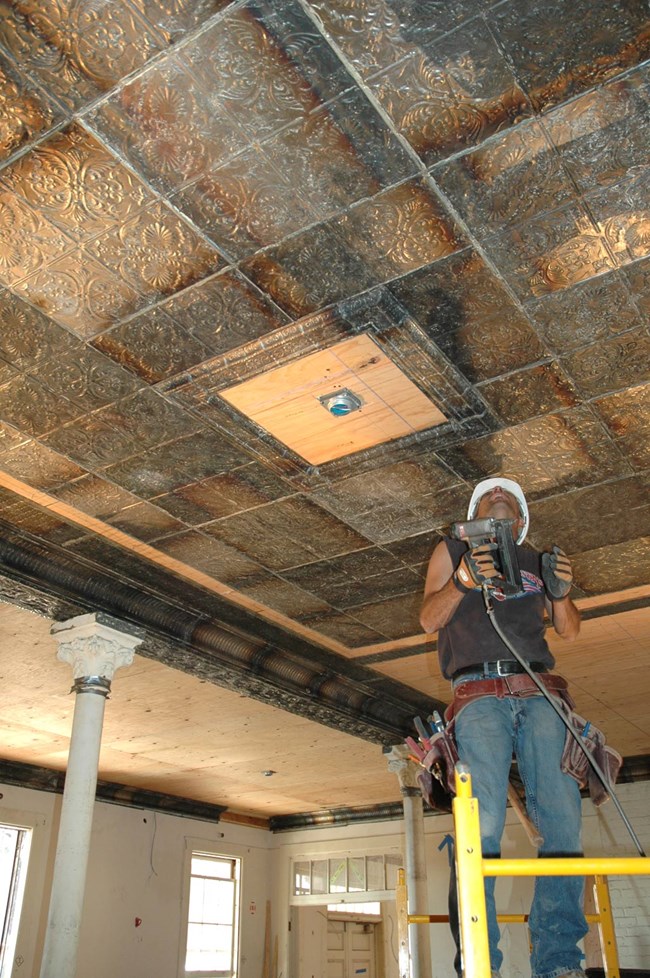
NPS photo 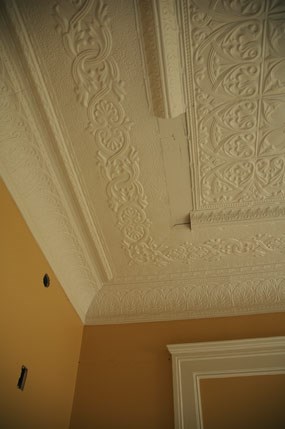
NPS photo The panels were then painted with a fresh coat of paint, ready for the next 100 years. To learn more about other Golden Gate National Recreation Area preservation projects, please visit the park's Historic Preservation page. |
Last updated: February 2, 2016
